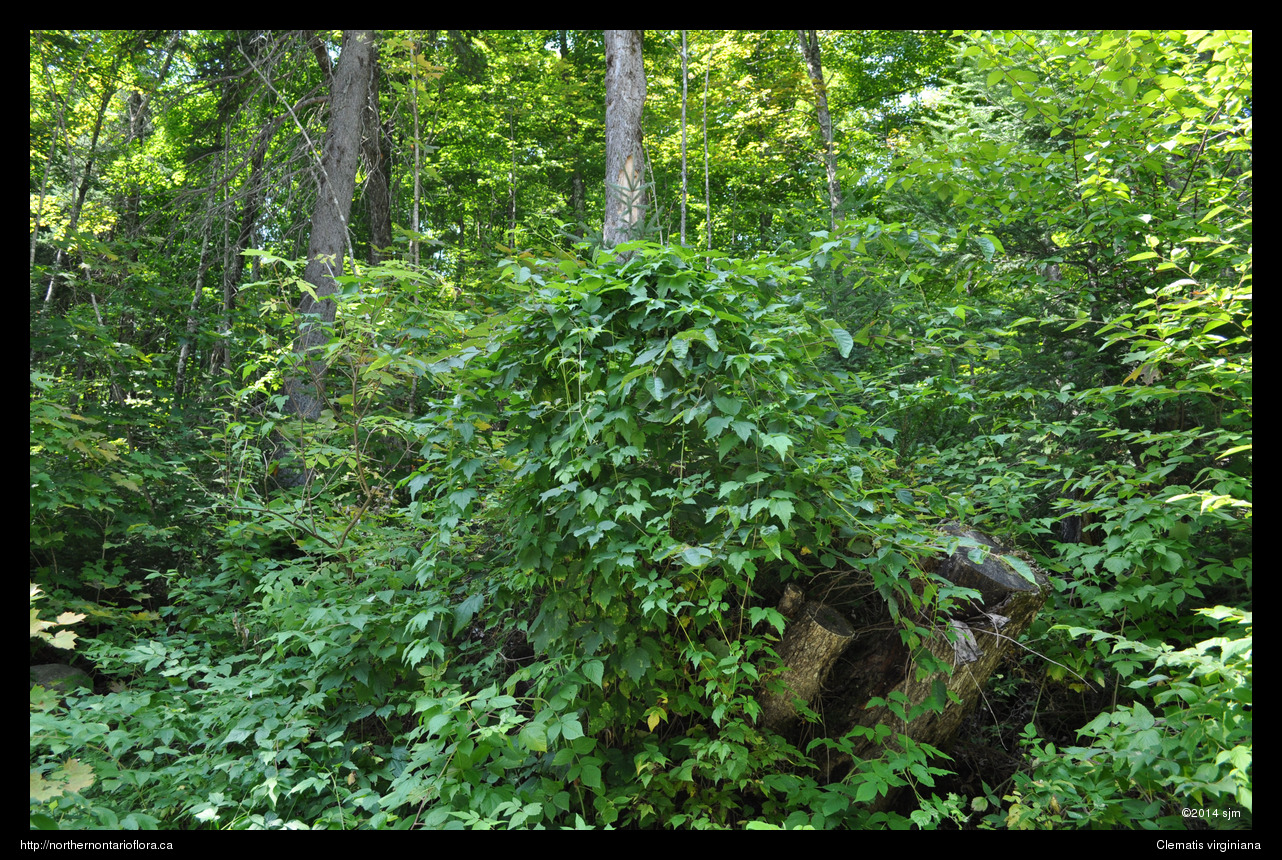
|
Northern Ontario Plant Database 
Plant DescriptionClematis virginiana L.En: virgin's-bower, devil's darning needles
Ranunculaceae (Buttercup or crowfoot Family) General: A slender deciduous woody vine, with trailing stems that can reach 2—7 m in length. The trailing stems of virgin's bower can easily become entangled in feet, so care should be taken to avoid tripping if walking through a colony. Judicious planting of virgin's bower can deter foot traffic in sensitive areas. Stems/twigs: Young branches are green, herbaceous, and finely hairy; mature woody stems are reddish brown to reddish-purple, smooth (glabrous), vertically ridged, and have a solid pith; buds are opposite and scaly; leaf scars are small and have one bundle trace scar. Leaves: Opposite, with 3 stalked leaflets (trifoliolate), palmately-veined; the long twining petioles are 5—9 cm long. Young leaves are often deep reddish-green and densely hairy, but at maturity become bright to dark green and glabrous above, lower surfaces are paler and slightly hairy. Leaflet blades are lanceolate to ovate, usually palmately lobed, and 3.5—9 cm long by 1.5—7.5 cm wide. Leaflet bases are rounded to slightly cordate, the apex tapers gradually to a sharply pointed (acuminate) tip, margins are entire near the base and coarsely toothed along the lobes. Flowers: Unisexual, with male and female flowers usually on different vines (dioecious). The many showy white flowers are arranged in branched inflorescences (cymes), arising from the leaf axils. Flowers have 4 spreading white to creamy-white sepals, elliptic to oblanceolate, 6—10 mm long, and finely hair on the outer surface; petals are absent. Each flower of the inflorescence is stalked; the pedicels 1—2 cm long. Male flowers have numerous stamens on long filaments; female flowers have many pistils surrounded by a row of sterile stamens; the pistil has a superior ovary and a long style that becomes feathery and persistent in fruit. Flowers bloom from mid July to late August. Fruit: In large rounded fluffy clusters of dry brown fruit (achenes), each terminating in a long feathery plume (persistent style), 2.5—4 cm long. Achene bodies are ovate, slightly hairy, and 2.5—3.5 mm long. Fruits mature in autumn and often persist into winter. Habitat and Range: In thickets, clearings, and along forest edges, often climbing over shrubs or into the branches of trees. Virgin's bower is a temperate eastern North American species that occurs throughout the Algoma District, extending N to about 48° 30'N, as well as throughout southern and eastern Ontario; in northwestern Ontario, it occurs only around the Thunder Bay area (Soper & Heimburger 1985). Similar Species: Purple clematis (Clematis occidentalis) is also native in northern Ontario; it can be recognized by its solitary nodding flowers, which have purple, pink, or bluish sepals, 3—5.5 cm long, and bloom in late spring (April-May). Purple clematis has a wider range in Ontario, extending westward nearly to the Manitoba border and north to about 51°N along the Moose River (Soper & Heimburger 1985). Back to species list |
||||||||||||||||||||||






















